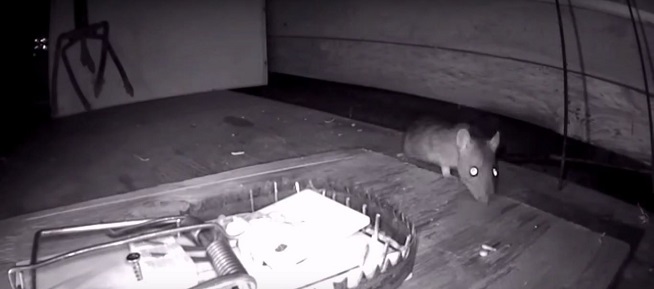As with other trap types, there are both advantages and disadvantages to
using electrocution style traps to get rid of your rat or mouse
infestation. Instead of telling you it's a bad idea, and that regular
and traditional snap traps are the better option, we're going to give
you the pros and cons for using each one … Are you ready?

Advantages
1
- You have a box-style unit with the electrical style rat traps usually, and this means that the rat itself will be cased-in and covered after it has died. This is good if you have kids or other pets around the home, and you'd rather not let them see that kind of destruction. It also keeps things nice and compact.2
- They can work when your rats are trap-shy. If the rat has gotten used to the look and feel of conventional snap traps, the new electrocution rat traps will be something different.Although cautious still, the rats might be tempted to get closer to something new if they aren't getting close enough to your old ones. We would always recommend that you move the snap traps around, finding more successful places, before you give up on them and try other rat removal methods. Rat snap traps have been proven to be the best rat removal method time and time again.
Find out how smart rats can be.
Disadvantages
1
- These electrical rat traps are often rather expensive, and you will need to consider the battery usage. You will need to buy new batteries, and they usually require four larger style batteries in order to run. Although they state the batteries will work for around 50 rats, the end result is considerably fewer - only around 10 to 15 of the rodents. You will also need to keep an eye on the trap to make sure you catch the ‘battery low' warning. If you don't replace the batteries, the rats won't be caught by it. You will also need to keep an eye on the bait and make sure there is plenty of it. You will still need to do this with other trap types, however.2
- You still have a disposal problem once the rat has been electrocuted. What are you going to do with the carcass? The problem will be contained, but it's still there.3
- Electrical style traps will only usually deal with one rodent at a time. If you buy more than one, which you'll need, things will start to get very expensive. Think of the batteries again. You can buy bigger units that are designed to capture more than one rat at a time, but if a rat senses a fellow rat is dead in the trap, it might not be foolish enough to get too close itself.4
- The electrical hit might not kill the animal. They usually work, but they are not 100% foolproof and can fail. If a snap trap fails, you can simply move and re-bait it. If an electrical rat trap fails, you'll need to make it back or buy a new one ... or resort back to the snap traps like we suggested in the first place! At the end of it all, there are both advantages and disadvantages to using electrical rat traps. We'll let you make your own mind up, but we know that we regularly use snap traps with great success.Go back to the Rats in the Attic home page.









